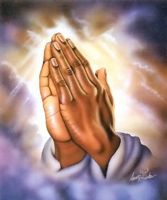

|
Thank you for being a loyal subscriber to the Totus Tuus, Maria E-Newsletter! Totus Tuus, Maria is your complete online companion to learning more about your Catholic Faith. Below is our featured article for this issue. The next few days, Catholics all over the world celebrate the climax of the Catholic calendar - the Sacred Easter Triduum, which includes Holy Thursday, Good Friday, and Easter Sunday. This article explains the Sacred Easter Triduum celebration and its relevance to our Catholic lives. Sincerely yours, Lourdes Policarpio The Sacred Easter Triduum
By Edgardo C. de Vera
The earliest feast day in the Church is Sunday. Christ resurrected on a Sunday and the day was chosen for commemorating the Christian Pasch. Thereafter followed an annual liturgical observance in the form of a Great Vigil during which the passion, death, and resurrection of our Lord Jesus Christ was commemorated in one Liturgy. The faithful gathered in a continuous overnight Liturgy to celebrate mankind’s salvation and also look forward to the Second Coming. During the course of a calendar year all of Christendom looked forward to this grand liturgy with anxious anticipation where the faithful joyfully participated in. Even the threat of harm, mayhem and death during the bloody persecutions in the second and third centuries could not deter Christians from this observance. The religious emancipation of Christians by Constantine’s Edictum Mediolanensium (Edict of Milan, AD 313) allowed all the faithful throughout the empire to openly celebrate Easter. A variance in the Easter observance arose in the early centuries owing to divergent calendars for the Easter observance. Most of the Church communities had opted to base it on the solar-based Julian calendar, whereas strict traditionalists preferred to have it based on the Jewish lunar calendar – even if it meant that the Resurrection would not fall on a Sunday. Both schemes were hotly debated in the Council of Aries (314) and again taken up by the Council of Nicaea (325) which definitively decided to adopt the first Sunday following first full moon after the vernal equinox as the proper date. So it was for centuries until the Eastern Churches fell out of synch with the West’s adoption of the more accurate Gregorian calendar. In time, the liturgical celebration evolved from one grand commemoration into a three day observance - the Easter Triduum - more in synch with the actual chronology of the climatic days of Christ’s mission. St. Ambrose of Milan writing in 386 describes the development to three days as: first day to commemorate our Lord’s passion; second when He rested from His sufferings; the third for His Resurrection. Saint Augustine referred to the three-day observance as the sacratissimum triduum crucifixi, sepulti et suscitat – the most sacred triduum of the crucified, buried, and risen Lord. In extending it to three days the Church accorded the faithful more time to meditate, relive and fully appreciate the various aspects of the one great salvific event, placing the glorious salvation within a time frame consonant with Gospel narrative, while likewise pointing to it as the fulfillment of three-day periods that prefigured it in the Old Testament. Click here to read the rest of the article New! CommentsHave your say about what you just read! Leave me a comment in the box below. |

